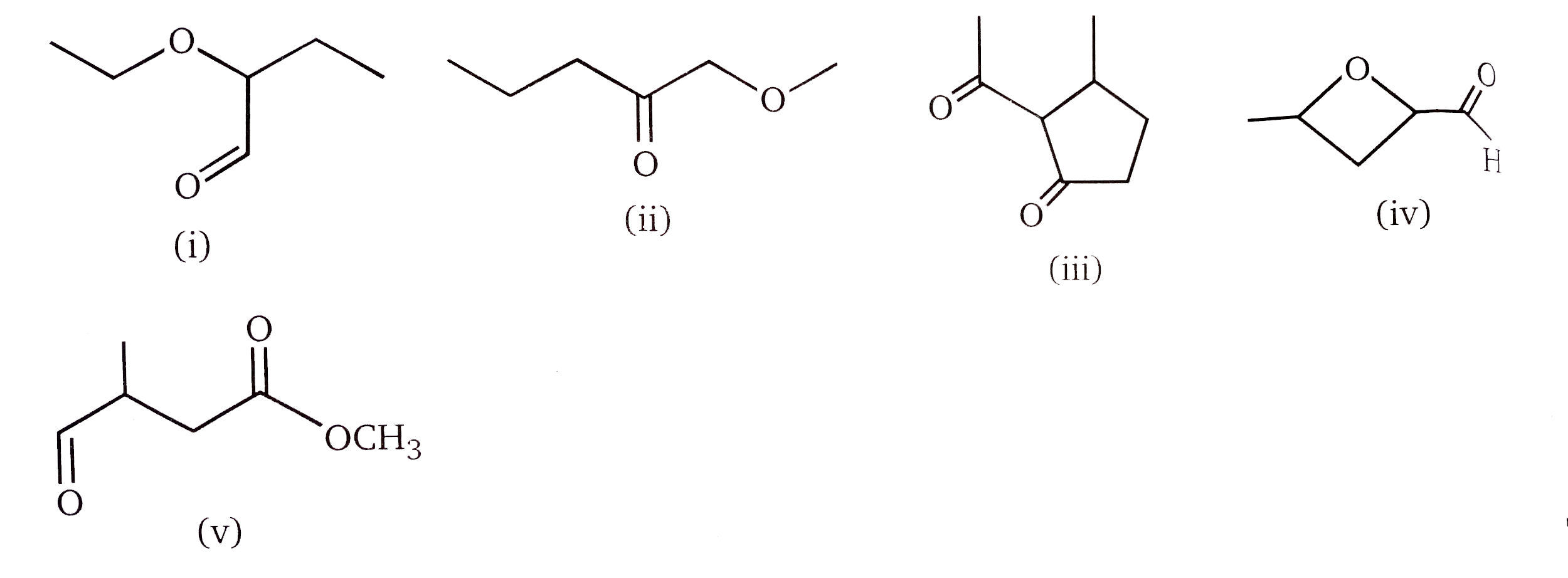Both t−butyl and (−SO3H) groups are used as a blocking group in certain synthesis of organic compounds. Which of the following statements are correct?
t− Butyl group is easily introduced by any of the varitions of the Friedel-Crafts alkylation reacton.
t-Butylgroupcanbe∫orducedbyusing:<br>I.Me_(3)C - Cl + AlCl_(3)<br>II.Me_(3)C - OH + BF_(3)
III. 
t− Butyl group can be easily removed under acidic conditions, beucase of the stability of tert-butyl cations.
t− Butyl group has advantage over a (−SO3H) group as a blocking group, becuase t− butyl group activates the ring to further SE reaction.
The correct Answer is:(a,b,c,d)
(a,b,c,d) All statements are self-explantory.
Topper's Solved these Questions
- AROMATIC COMPOUNDS AND ALKYL AND ARYL HALIDES BOOK - CENGAGE CHEMISTRY ENGLISHCHAPTER - AROMATIC COMPOUNDS AND ALKYL AND ARYL HALIDES EXERCISE - Exercises Multiple Correct Answers Type
15 Videos
- AROMATIC COMPOUNDS AND ALKYL AND ARYL HALIDES BOOK - CENGAGE CHEMISTRY ENGLISHCHAPTER - AROMATIC COMPOUNDS AND ALKYL AND ARYL HALIDES EXERCISE - Exercises Single Correct Answer Type
28 Videos
- AROMATIC COMPOUNDS AND ALKYL AND ARYL HALIDES BOOK - CENGAGE CHEMISTRY ENGLISHCHAPTER - AROMATIC COMPOUNDS AND ALKYL AND ARYL HALIDES EXERCISE - Exercises Linked Compreshension Type
11 Videos
- APPENDIX INORGANIC VOLUME 2BOOK - CENGAGE CHEMISTRY ENGLISHCHAPTER - APPENDIX INORGANIC VOLUME 2EXERCISE - Short Answer Type
179 Videos
- BIOMOLECULESBOOK - CENGAGE CHEMISTRY ENGLISHCHAPTER - BIOMOLECULESEXERCISE - Exercises Archives (Analytical And Descriptive)
8 Videos
Similar Questions
Knowledge Check
Which of the following is a 3 methyl butyl group.
ACH3CH2CH2CH2CH2B(CH3CH2)2CH−C(CH3)2CHCH2CH−2D(CH3CH2)2CH−2Many organic compounds contain more than one functional group. Which of the following is both an aldehyde and an ether?
 A(i) onlyB(i) and (iv)C(ii) and (v)D(iii) and (iv)
A(i) onlyB(i) and (iv)C(ii) and (v)D(iii) and (iv)Many organic compounds contain more than one functional group. Which of the following is both an aldehyde and an ether?
 A(i) onlyB(i) and (iv)C(ii) and (v)D(iii) and (iv)
A(i) onlyB(i) and (iv)C(ii) and (v)D(iii) and (iv)
Three of the following four are alike in certain way and so form a group. Which is the one that does not belong to that group?
View SolutionThree of the following four are alike in certain way and so form a group. Which is the one that does not belong to that group?
View SolutionThree of the following four are alike in certain way and so form a group. Which is the one that does not belong to that group?
View SolutionThree of the following four are alike in certain way and so form a group. Which is the one that does not belong to that group?
View SolutionThree of the following four are alike in certain way and so form a group. Which is the one that does not belong to that group?
View Solution
